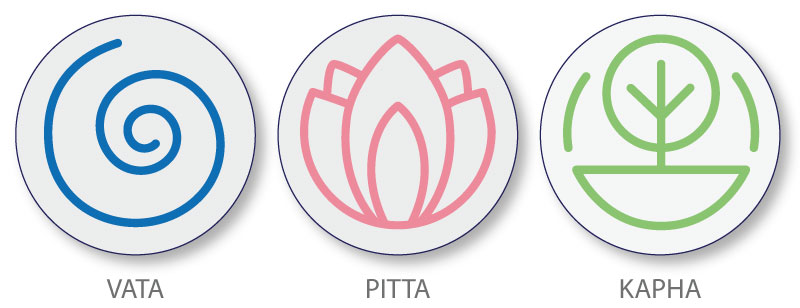The most famous Ayurvedic Rasayana is probably Amrit Kalash. Most likely, you have already seen or tried it, be it in a Panchakarma course of treatment, through a recommendation, or when you were getting acquainted with Ayurveda and popular medicinal plants.
Amrit Kalash typically comes in the form of a boiled-down paste, with an unusual consistency and a sweetish taste. Most people like taking it.
The mythical tale behind the origin of Amrit Kalash is an allegory for human development towards perfect health. The words Amrit Kalash mean ‘the vessel containing the nectar of life’, a metaphor for the human body.
The classical texts describe how, in a tug of war, the positive forces of the Devas and the opposing forces of the Asuras stir a milky ocean and eventually produce the ‘nectar of immortality’ that can protect humankind from disease and suffering.
As the ocean begins to foam more and more, Dhanvantari, the guardian Devata of Ayurveda, emerges from it, holding the Amrit Kalash (more literally translated as ‘ambrosia chalice’) in his hands.
This nectar balances body, mind, and soul and brings harmony to the Doshas.
How Amrit Kalash came to the West

In the early 1980s, Maharishi Mahesh Yogi brought the millennia-old Vedic teachings to the West, and throughout his life he worked to revive and restore in its completeness the knowledge that had been scattered and partially lost.
With the support of Indian scholars, most prominently B. D. Triguna, V. M. Dviwedi and Balraj Maharshi, a lot of attention was also given to Ayurveda and herbal medicine, including the development of high-quality formulations for food supplements and Rasayanas – rejuvenating therapies. One of the Rasayanas is called Amrit Kalash.
Preparing Amrit Kalash is an elaborate process, involving over 250 production steps to transform the raw materials into a Rasayana that is ready for consumption. For every kilogram of the paste, 22 kilos of herbs, roots, and fruits are collected from 14 cultivation areas spread all over India up to the Himalayas. In total, 42 different plant parts are used, together with Ghee, honey, and cane sugar.
In order to meet the high quality standards of Maharishi Ayurveda products, specially-trained employees, who know the best time of harvest, the special characteristics of the individual plants, and what is important for the processing, collect and harvest the plants.
For example, the Amalaki fruit is commonly collected from the ground, but for Amrit Kalash it must be picked from the Amla tree at the right stage of ripeness. The Amalaki fruit has a very high content of vitamin C and the Vedic texts refer to it as a divine medicinal plant. In addition to its use in Amrit Kalash, it is also used in many other herbal preparations. Another important ingredient is Haritaki, a fruit which Ayurveda classifies as having a Pitta-reducing, blood-purifying and nerve-strengthening effect and which also occurs in the well-known Triphala Churna.
Over the last decades, Ayurvedic knowledge has entered the western mainstream, specifically also in Germany, and is now implemented effectively for improving our health, for example in the context of Panchakarma courses of treatment given in Maharishi Ayurveda health centers. Even today, Vaidyas (Ayurvedic doctors), classical physicians, and scientists are researching the traditional texts and substantiating them through scientific methodology.
Strengthening the immune system with Amrit Kalash
Through its many health-promoting ingredients, Amrit Kalash balances the Doshas and builds up Ojas. Ojas is the term Ayurveda uses for the most refined product of our digestion, which is associated with radiance, vitality, and longevity. Enhancing or restoring the production of Ojas is the goal of every Panchakarma treatment.
Amrit Kalash is often administered for a few weeks after Panchakarma, as a follow-up treatment to maximize the benefits of the cure.
Several studies have shown that Amrit Kalash is a highly potent antioxidant, which means that it saturates free radicals. Radicals are highly-reactive intermediate products of various stages of metabolic processes, meant to be used up in a following step. If this doesn’t happen, they become free radicals, which can damage DNA and cell functioning and thus lead to faster aging as well as all kinds of inflammation, cancer, etc.
The well-known anti-oxidants – pure vitamins A, E, C, and trace element selenium – provide the body with free electrons which directly saturate the free oxygen radicals and make them harmless. Amrit Kalash works completely differently.
Because the effects of the different plant components complement and potentiate each other, Amrit Kalash has a much greater impact than individual substances.
Several studies have shown that Amrit Kalash is 100 to 1,000 times more effective in disarming damaging free oxygen radicals than the vitamins and trace elements that are usually praised for this.
Other studies revealed that Amrit Kalash (MA 4 and MA 5) activates superoxide dismutase, which is a highly potent enzyme produced by our own physiology. Superoxide dismutase is constantly busy saturating free radicals to render them harmless, thereby removing the basis for many different diseases, as has also been shown by various studies.
Scientific studies have also demonstrated the effect of Amrit Kalash on the formation of white blood cells, which are essential for immune defense: when pathogens were present, defense cells divided more quickly and the immune response was more targeted. Accordingly, overreactive immune responses, often seen with allergic reactions, were rarer when the Rasayana was taken.
When to use Amrit Kalash
The classical texts recommend taking it daily especially during demanding periods for body and mind. That is, in times when our immune system is under greater strain, such as in winter or in the transitional period to spring. Mental stress also impairs the immune system and makes us more susceptible to infections.
Amrit Alash is pacifying all three Doshas, but mainly Vata and Pitta Dosha. According to Ayurveda, it also nourishes and strengthens all the Dhatus (body tissues).

As Amrit Kalash contains a good amount of sugar, people with prediabetic metabolism, diabetes, or candida challenge should consult with their Ayurvedic doctor, so they can prescribe an alternative Rasayana.
Amrit Kalash comes in two components, a paste (MA 4) and tablets (MA 5). Research has shown that these two highly potent remedies have a balancing effect on a wide range of disorders (e.g. depression, pains, menstrual cramps, and allergies) and stimulate a significant improvement in the immune system. They have a preventive and alleviative effect in cancer and protect against harmful chemical substances, thus making for an adjunctive therapy to mitigate the side effects of chemotherapy and radiotherapy in the treatment of malignant tumors.
According to studies, the activation of the above-mentioned superoxide dismutase gradually decreases after 5–6 hours, so it’s recommended to distribute the intake of the two preparations evenly over the day as possible.
For specific questions regarding taking Rasayanas, please consult your Ayurvedic doctor or Vaidya. They can evaluate a specific condition within the broader context of your overall situation during an outpatient consultation
Wishing you good health and resilience!

Download the article as a PDF file.
© Maharishi Ayurveda Health Centre Bad Ems

Greetings,
Where can I purchase the Amrit Kalash seen above ? I do not have any special stores I know of near me.
Please if you ca, guide me on how to order it.
Thank you for your wonderful, healthful services, I simply love your newsletter, it is Godsend, every time I receive it.